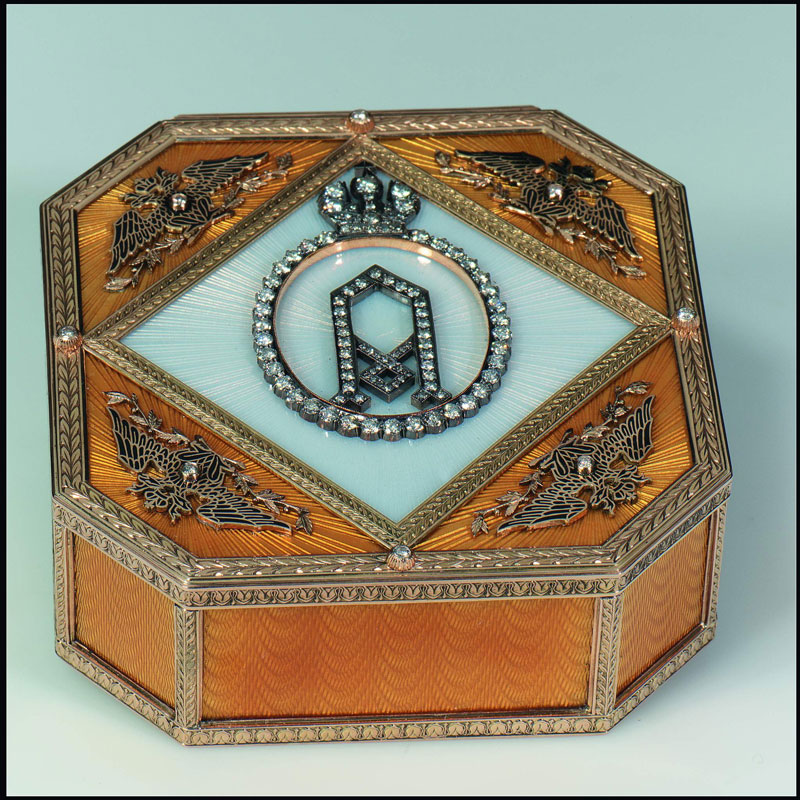Прозрачная эмаль на гильошированном фоне
Техника нанесения на металл большого количества разнообразных волнистых линий изобретена во Франции более 200 лет назад. Названа по имени ювелира, автора этой техники - месье Гийоше.
В 19 веке все крупные ювелирные фирмы имели специальные станки, выполнявшие на серебре или золоте гравировку в виде сетки волнистых линий. Станки эти имели сложное механическое устройство, а гравированные линии возможно было изменять по амплитуде и высоте волны. В итоге, на металле образовывалась красивая комбинация гравированных волн. Как правило, после гравировки, на металл наносили прозрачную эмаль.

После переворота в 1917 году к власти пришли большевики. Закрылись ювелирные мастерские, прекратила свое существование крупнейшая в России фирма Карла Фаберже. Лучшие мастера фирмы или уехали за границу, или были репрессированы. В стране наступил упадок ювелирного искусства. Оказались ненужными и сложные станки для гильошировки. Как ни странно, ни одного исторического экземпляра этих уникальных устройств не сохранилось.
Андрей Ананов, освоивший ювелирное ремесло самостоятельно, решил возродить и эту уникальную технику. Первое гильошировочное устройство он собрал на основе детского токарного станка. Хитроумное приспособление к станку гравировало кривые линии, затухающие к центру пластины, укрепленной на специальной план-шайбе. В дальнейшем, совершенствуя свои изобретения, удалось освоить гильошировку криволинейных поверхностей, в частности - пасхальных яиц.
Наиболее широко используется техника нанесения прозрачной эмали на гильошированную поверхность в изготовлении предметов, украшающих интерьер гостиных, кабинетов, туалетных столиков. Рамки для фотографий и миниатюр, портсигары, коробочки для мелких предметов, медальоны, серьги и кольца, браслеты, колье, пасхальные яйца и многие другие ювелирные предметы, украшены таким образом.

Как ни странно, но посещая Францию, Германию и другие страны Европы, Ананов никогда не встречал современные станки для гильошировки. Удалось найти только одну фирму в Великобритании, наносящую гравированные волнистые линии, да и то - на плоскую поверхность.
Да это и понятно. Работая руками, а гильошировка - это сугубо ручной труд - миллионером не станешь. Процесс это долгий, на изготовление одного, скажем, пасхального яйца размером с яйцо страуса, уходит не меньше 10 часов. А в современном ювелирном производстве все процессы ориентированы на получение максимальной прибыли. Ушли в прошлое "золотые руки" мастеров-ювелиров. На смену им пришло точное литье, когда достаточно иметь мастер-модель, а затем отливать изделия тысячами. Штамповка, химическая полировка и гальваническое изготовление деталей.
Ювелирное искусство уступило место ювелирному ширпотребу. А жаль...
Автор: А.Г. Ананов


